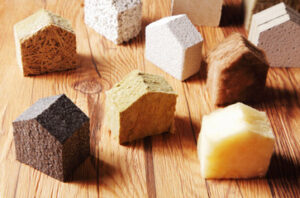The roof is one of the most important parts of your home. It protects your property and can add to its resale value.

If you have signs like heavy granule loss, sagging areas or leaking spots, it may be time to consider roof replacement. Visit Our Website Here for more details.
A tear-off provides roofing contractors with a thorough look at the underlying materials and can help prevent future problems.
A well-maintained roof acts as a barrier against harsh sunlight, rain, snow, winds, and other elements that can cause damage to your home’s interior. But an old or damaged roof can no longer do this, which means that your belongings and the structure of your home are susceptible to extreme weather conditions that could result in costly repairs.
Leaks and water spots on ceilings and walls are clear signs that you have a roof problem. Addressing them promptly with a new roof will protect your possessions from water damage, prevent mold growth, and help protect your health and safety.
A new roof can also make it easier to sell your home, and it may increase the selling price. It can improve your home’s curb appeal and enhance its appearance, which can make it easier to find potential buyers.
When deciding whether to repair or replace your roof, consider the following factors:
The age of the roof — An aging roof can no longer effectively protect your property, especially if it’s under warranty. A new roof can give you peace of mind that your home is adequately protected against extreme Florida weather.
A new roof can last up to 50 years, meaning you won’t have to worry about replacing it again for a long time. It can also save you money on heating and cooling, boost your home’s energy efficiency, and add to its curb appeal. If you have kids or pets, consider arranging alternative housing during the construction phase. Continuous loud noises and the presence of strangers may be stressful for them.
Adds Value to Your Home
While you might think that a kitchen remodel or knocking down a wall to create an open floor plan are the best ways to boost your home’s value, investing in a new roof is another great way to increase your property’s value. In addition to enhancing your home’s appearance and protecting it from the elements, a new roof adds curb appeal, increases energy efficiency, improves safety, and helps sell your home faster.
Depending on the style of your house and roofing materials, you can expect to recoup up to 60% of your initial investment when it comes time to sell your home. A new roof will provide a significant boost in curb appeal, which can help you get the best price on your home and make it stand out from other available properties in your area.
A new roof is a major selling point for prospective buyers, who will be happy to pay more for a home that is in good condition and has been well maintained. In addition, a new roof will reduce the amount of time your home spends on the market, which can save you money in marketing and estate agent fees.
If your roof is in need of serious repairs, you should consider replacing it with a high-quality roof to ensure that the repairs will hold up under future weather conditions. If you are unsure whether your roof is in need of repair or replacement, a professional can provide a free inspection.
You might be able to get away with spot repairs on simple gable and hip roofs that don’t have many angles, valleys, or custom features, but on steep-pitched designs with complicated architecture, it may be better to replace the whole roof so that the newer materials blend in.
While you might be tempted to let your kids and pets play on the roof during a roof replacement, it is best to keep them away from the work area to prevent accidents or injuries. If possible, you should arrange for them to stay with friends or family while the roof is being replaced. You should also remove any toys, lawn ornaments, grills, and potted plants that are in the immediate vicinity of the work site.
Increases Energy Efficiency
One of the biggest benefits of roof replacement is that it will improve your home’s energy efficiency. A new roof will help you save money on your energy bills, and it will also protect your home from wasting heat in the summer. This will reduce your reliance on air conditioning, which can save you a significant amount of money in the long run.
A new roof will also provide your home with better insulation and ventilation, which can also make it more energy efficient. This is because it will prevent heat and moisture from building up in your attic, and it will help to keep your home cooler during the scorching Tennessee summers.
Another way that a new roof can increase your home’s energy efficiency is by reflecting solar radiation and minimizing heat absorption. This can help to reduce your home’s energy bills, and it can also improve the comfort of your living space.
In addition to making your home more energy efficient, a new roof can also help to protect it from water damage and mold growth. Leaking roofs can cause major problems for your home’s interior, and they may even lead to structural damage. If you replace your old roof with a new, leak-proof one, it will protect your home from moisture and mold for years to come.
Unlike reroofing, which only repairs specific areas of your roof, roof replacement can address all the issues that are affecting your home’s energy efficiency. Adding solar reflective coatings, sealing leaks, upgrading attic insulation, and ensuring proper roof ventilation can significantly lower your home’s energy costs.
If you are considering either reroofing or roof replacement, talk to a professional roofing contractor about the best options for your home’s needs. They can provide you with a free estimate and recommend the best solution for your budget and lifestyle.
Before your roofers start working on your home, be sure to remove any kids’ toys, lawn ornaments, grills, potted plants, or anything else that could fall or get damaged during the work process. This will keep the area safe and clean, and it will also ensure that your belongings are protected from any dust or debris that might fly around during the roof replacement.
Increases Home Value
Many homeowners make improvements to their homes with the goal of increasing resale value. From installing new windows to knocking down walls for an open floor plan, there are a number of ways to boost your home’s market value. But one of the most cost-effective and impactful upgrades is a new roof. Not only does a new roof add to your home’s aesthetic appeal, but it also protects your investment and saves you money on energy costs.
A new roof can add anywhere from 5% to 15% to your home’s overall value. That is a significant increase and can help you get a higher asking price when you decide to sell your home. In addition, a new roof shows potential buyers that you have taken care of your home and that the property is in good condition.
If you are thinking about selling your home in the future, it is a good idea to replace your roof early to get the most out of your return on investment. However, it is important to note that you may not be able to recoup the full cost of your roof replacement. In general, you will only recoup about 60-70% of the value of your new roof in the sale of your home.
Aside from the resale value, a new roof will increase your home’s curb appeal and can be a selling point to potential buyers. In addition, a new roof can also save you money on your energy bills and qualify you for tax credits or deductions.
No matter your motivation for a new roof, it is an excellent investment that can significantly boost the market value of your home. If you are considering selling your home in the near future, a new roof can be one of the best ways to increase the value and speed up the sales process. In addition, a new roof can offer you protection and peace of mind for years to come. So if you are in need of a new roof, contact a local roofing contractor to discuss your options and to find out how much your roof can increase the value of your home.


